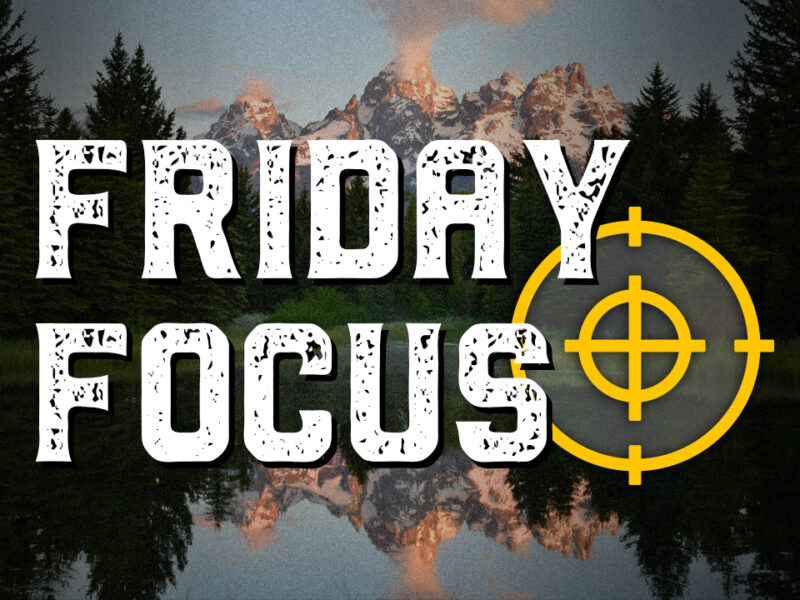FRIDAY FOCUS: Surge in Teen Depression, Suicides Caused by ‘Perfect Storm’ of Factors
Expert: Loneliness, COVID isolation, social media stressors can compound mental health challenges for youth
- Published In: Other News & Features
- Last Updated: Jun 23, 2023

By Ernest Beck
Special to the Wyoming Truth
Two years ago, U.S. Surgeon General Vivek Murthy warned that mental health challenges were having “devastating effects” on young people. In 2019, for example, 33% of adolescents reported having a major depressive episode, a 60% increase from 2007. Emergency room visits in that period also rose sharply for anxiety, mood disorders and self-harm among patients in this age group.
And for people ages 10 to 24, suicide rates, stable from 2000 to 2007, leaped nearly 60% by 2018, according to the Centers for Disease Control and Prevention.
More recently, the Center for Disease Control’s 2023 Youth Risk Behavior Study revealed high rates of distress among the high school students it surveyed, noting that a “large and increasing percentage felt persistently sad or hopeless” across all race and ethnic groups. Teen mental health problems were compounded by a lack of available behavioral health services, with a growing number of adolescents spending days or even weeks in hospital emergency departments awaiting treatment.
What is driving this staggering increase in mental health challenges for young people—whether they live in a big city or rural areas of Wyoming?
Experts say a range of factors are to blame, including the influence of social media, easier access to powerful drugs and the isolation of the COVID-19 pandemic. Jim Lyon, director of juvenile services for Campbell County in Gillette, said this created a “perfect storm” of stressors for teens, in addition to the usual problems they face searching for identity and finding their place in the adult world.
Lyon works with many organizations and state agencies that provide a wide range of essential services to young people struggling with mental health issues and substance abuse. He spoke with the Wyoming Truth about why many Wyoming teens are troubled, the impact of trauma on their lives and how therapy and counseling can help them through difficult times. What follows are excerpts from the conversation.
There is a nationwide teen mental health crisis. What is the situation in Wyoming?
Lyon: I see increasing levels of anxiety, depression, and suicide. Last year, we had a record number of completed suicides in our county for both adults and juveniles, and we are on track to exceed that in 2023. (Overall, Wyoming’s suicide rate is more than double that of the national average, and, at 30.5 per 100,000 persons in 2020, the highest rate per capita in the nation, according to the Wyoming Department of Health.)
Social media is often blamed for the crisis. What’s your view?
Lyon: My opinion is that social media will be the death of society. Participants in our programs are actively involved with all kinds of social media—even more so during the pandemic when they were also learning remotely. It was hard at that time and still affects them today. Social media provides an instant gratification response and if that isn’t met, many young people lack coping skills or resiliency and don’t know how to respond. If a parent or guardian takes their phone away, they act out because they believe they’ve lost their connection to the rest of the world and feel lonely and isolated.
It is often said that the vast open spaces of Wyoming heighten the sense of loneliness.
Lyon: Our long winters and distances between where people live can contribute to that isolation. In many cases, it forces our young people to rely solely on themselves when dealing with trauma, grief, and loss. These problems might originate in experiences at home with divorce, domestic violence, abuse, or the death of a friend or loved one. One way this manifests itself is by self-medicating with alcohol or drugs—or both—to feel better or dull the pain. This can cloud the mind of a teenager whose brain is not fully developed, as scientific studies have shown.
What is the profile of a Wyoming teen who might seek mental health services?
Lyon: It’s all over the map. Some are affluent, and others might be from lower-income families. Households can have two parents or be single-parent homes, or the grandparents are raising the kids. There’s no consistent pattern—the only constant being the big one of trauma. I put many typical teen problems into this category, from a bad breakup to family dynamics or moving here from another part of the country and having to adjust to a new school or living situation. Many teens don’t know yet how to logically think through these challenges and navigate their way in the world.
Mental health services are difficult to access in many areas of the country, especially in the Mountain West states. Federal data shows that over 70% of Idaho, Utah, Wyoming and Nevada residents live in designated mental health shortage areas.
Lyon: We’re lucky in that young people in Campbell County can get help. We have kids’ clinics and crisis shelters and hospitals where they can find counseling and feel safe, like the Y.E.S. House that offer emergency services. But sometimes there are roadblocks. Access can come down to money: Do providers take insurance or Medicaid, or do they operate on a sliding scale so that people can afford it? We always need more funding to overcome these hurdles and ensure everyone can easily access the help they need.
Are young people aware of these services, and do they feel comfortable about using them?
Lyon: The good news is that they do know, and so do parents, and they get in touch. There might still be some stigma attached to mental health problems, but I don’t see much of the old “just cowboy up and deal with it” mentality, at least in the younger generation. For them, it’s more socially acceptable to seek help, especially if they haven’t yet reached rock bottom. They might be suffering but don’t know how deep they can go and are, therefore, more open to seeing a therapist. They respond well to treatment. It might be scary at first because nobody likes to change. But of course, they will have to change to get better.













